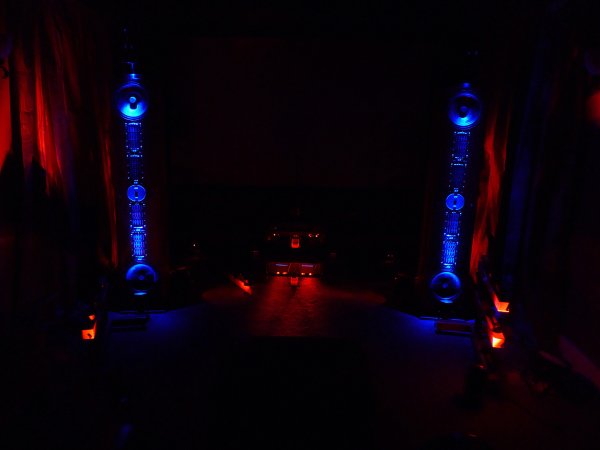
Here we are well into the 21st century with most everybody owning a smart phone and high-end audio is doing the still-picture-only thing to demonstrate how musical our playback systems are. Not much fun in that. It’s all too easy to make a playback system look good but it’s quite another to make a playback system sound good, er, um, musical. Especially via a smart phone.
It seems everybody's got a story. So what’s my story?
For the past 17 years, I’ve been dabbling with extreme forms of electrical management and especially extreme forms of vibration management. The very two energies required for a playback system to even function. Yet, when undermanaged these same two energies will absolutely cripple our sensitive component so that they can only perform at their base performance levels. A universal performance-limiting governor (think hi-fi sound). But when properly managed will cause their performance levels to soar far beyond even what their original designers ever intended.
For some years now I’ve realized that electrical and mechanical energy mgmt, whether inferior or superior, are truly the foundation for which every last system is built. Bar none. And it is the foundation that determines the performance of everything installed on it. So committed to this strategy and method that roughly 65% of my playback system’s total costs are dedicated to electrical and mechanical energy management. A ratio simply unheard of in high-end audio but performance-wise makes all the difference.
Of course talk is cheap so I’ve included below links to some recent in-room recordings captured via my iPhone XR along with a Shure MV88 microphone. Even without the MV88, the iPhone really does a reasonably well job though I’m quite the novice at using it for these purposes.
Though not necessary, I highly recommend listening with a good quality set of headphones to capture the most of these in-room recordings. Whether torturous, complex, dynamic, pristine, or even delicate the iPhone does a pretty good job of preserving at least some of the playback system’s characteristics and seemingly without any apparent break up, flattening out, or other variables inducing ear fatigue. Not even with recordings that until now may have been deemed inferior. But even these in-room recordings pale in comparison to listening in the listening room itself. I also think the iPhone does a reasonable or better job of preserving some of the detail, timbral accuracy, the absence of any negative sibilance, and the abundance of ambient info embedded in most every recording.
Feel free to comment. But at least with in-room recordings we’re no longer shooting in the dark about each other’s playback system. And perhaps we’re better able to discern others’ perspectives toward building a musical playback system.
BTW, if per chance you have an appreciation for the dynamics, note that I'm only using the source's passive volume attenuator - IOW, no active gainstage but with high-powered amps all the dynamics remain but are now up on the soundstage with the rest of music where they belong and well behind the speakers. Also, I think it worth noting I've applied no room acoustic treatments as there is no need.
Anyway, here is what I consider my humble but well-thought-out 2-channel, 2-component playback system. It doesn't get any simpler. Well, sort of....

